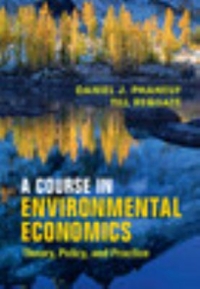Answered step by step
Verified Expert Solution
Question
1 Approved Answer
Consider a two-player game between Child's Play and Kid's Korner, each of which produces and sells wooden swing sets for children. Each player can set
Consider a two-player game between Child's Play and Kid's Korner, each of which produces and sells wooden swing sets for children. Each player can set either a high or a low price for a standard two-swing, one-side set. If they both set a high price, each receives profits of $64, 000 per year. If one sets a low price and the other sets a high price, the low-price firm earns profits of $72,000 per year, while the high-price firm earns $20, 000. If they both set a low price, each receives profits of $57, 000. (a) Verify that this game has a prisoners' dilemma structure by looking at the ranking of payoffs associated with the different strategy combinations (both cooperate, both defect, one defects, and so on). What are the Nash-equilibrium strategies and payoffs in the simultaneous-play game if the players meet and make price decisions only once? (b) If the two firms decide to play this game for a fixed number of periods - say, for 4 years - what would each firm's total profits be at the end of the game? (Don't discount.) Explain how you arrived at your answer. (c) Suppose that the two firms play this game repeatedly forever. Let each of them use a grim strategy in which they both price high unless one of them "defects", in which case they price low for the rest of the game. What is the one-time gain from defecting against an opponent playing such a strategy? How much does each firm lose, in each future period, after it defects once? If r = 0.25 ( = 0.8), will it be worthwhile for them to cooperate? Find the range of values of r (or ) for which this strategy is able to sustain cooperation between the two firms. (d) Suppose the firms play this game repeatedly year after year, neither expecting any change in their interaction. If the world were to end after 4 years, without either firm having anticipated this event, what would each firm's total profit (not discounted) be at the end of the game? Compare your answer here with the answer in part (b). Explain why the two answers are different, if they are different, or why they are the same, if they are the same. (e) Suppose now that the firms know that there is a 10% probability that one of them may go bankrupt in any given year. If bankrupcy occurs, the repeated game between the two firms ends. Will this knowledge change the firms' action when r = 0.25? What if the probability of a bankrupcy increases to 35% in any year
Step by Step Solution
There are 3 Steps involved in it
Step: 1

Get Instant Access to Expert-Tailored Solutions
See step-by-step solutions with expert insights and AI powered tools for academic success
Step: 2

Step: 3

Ace Your Homework with AI
Get the answers you need in no time with our AI-driven, step-by-step assistance
Get Started


